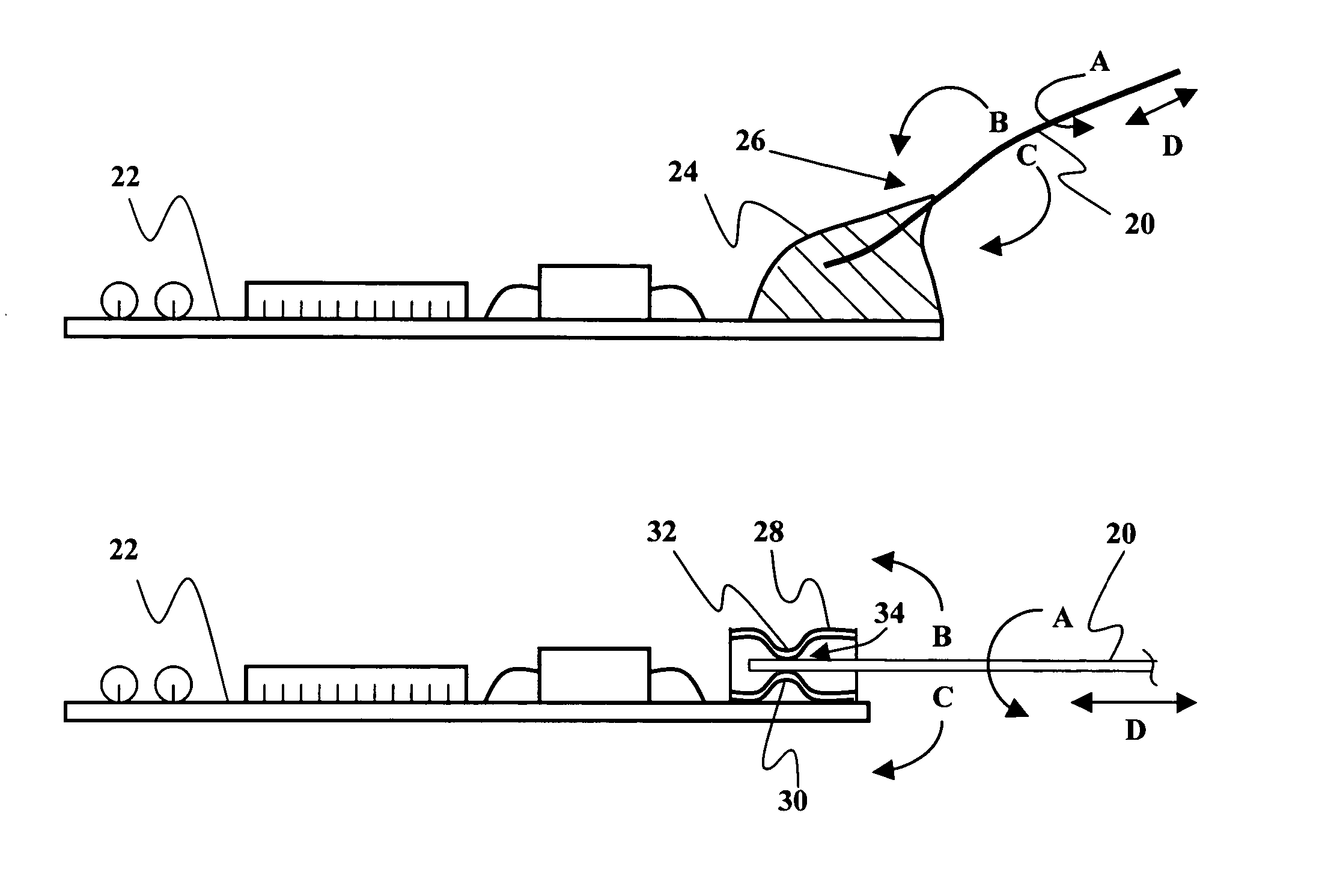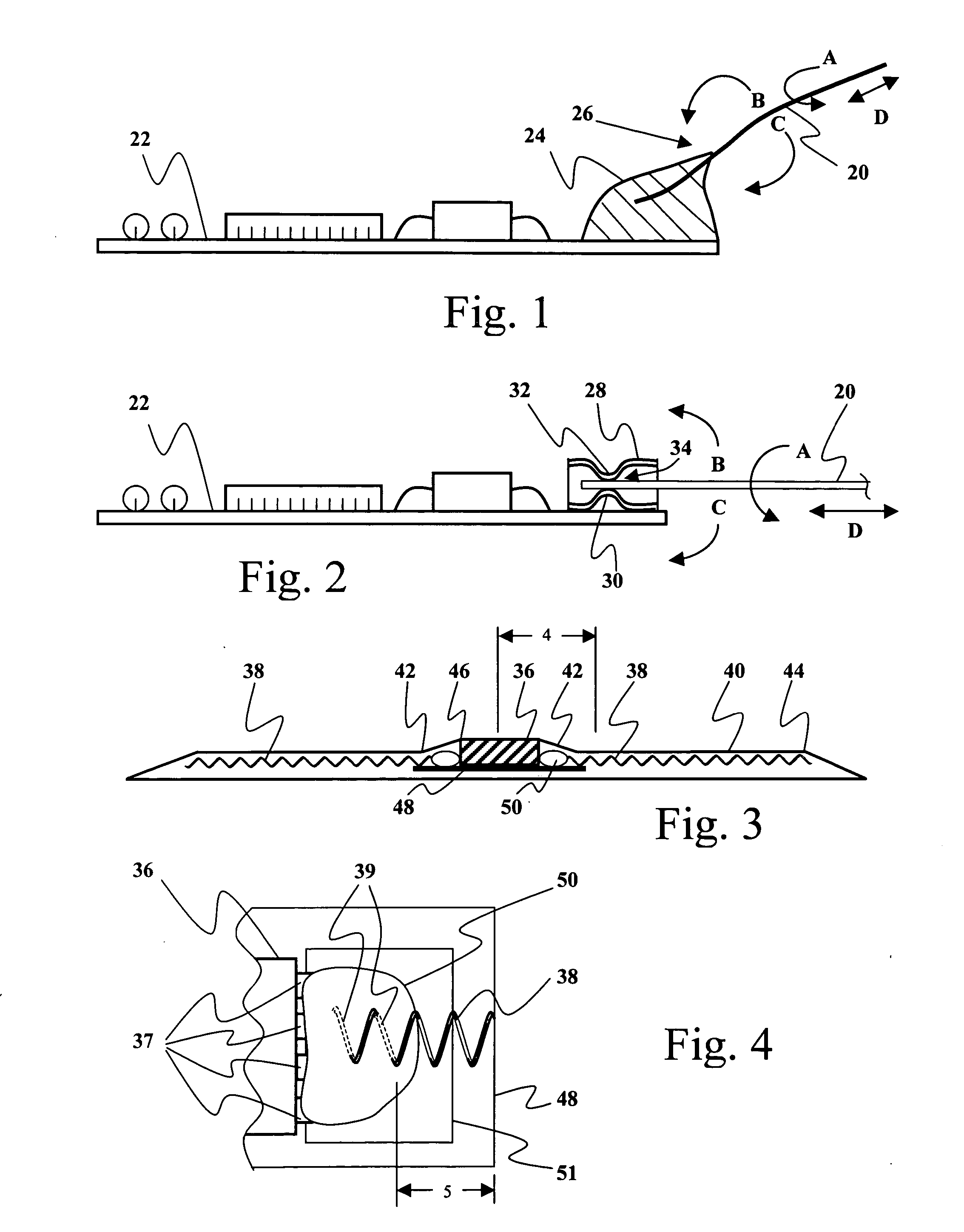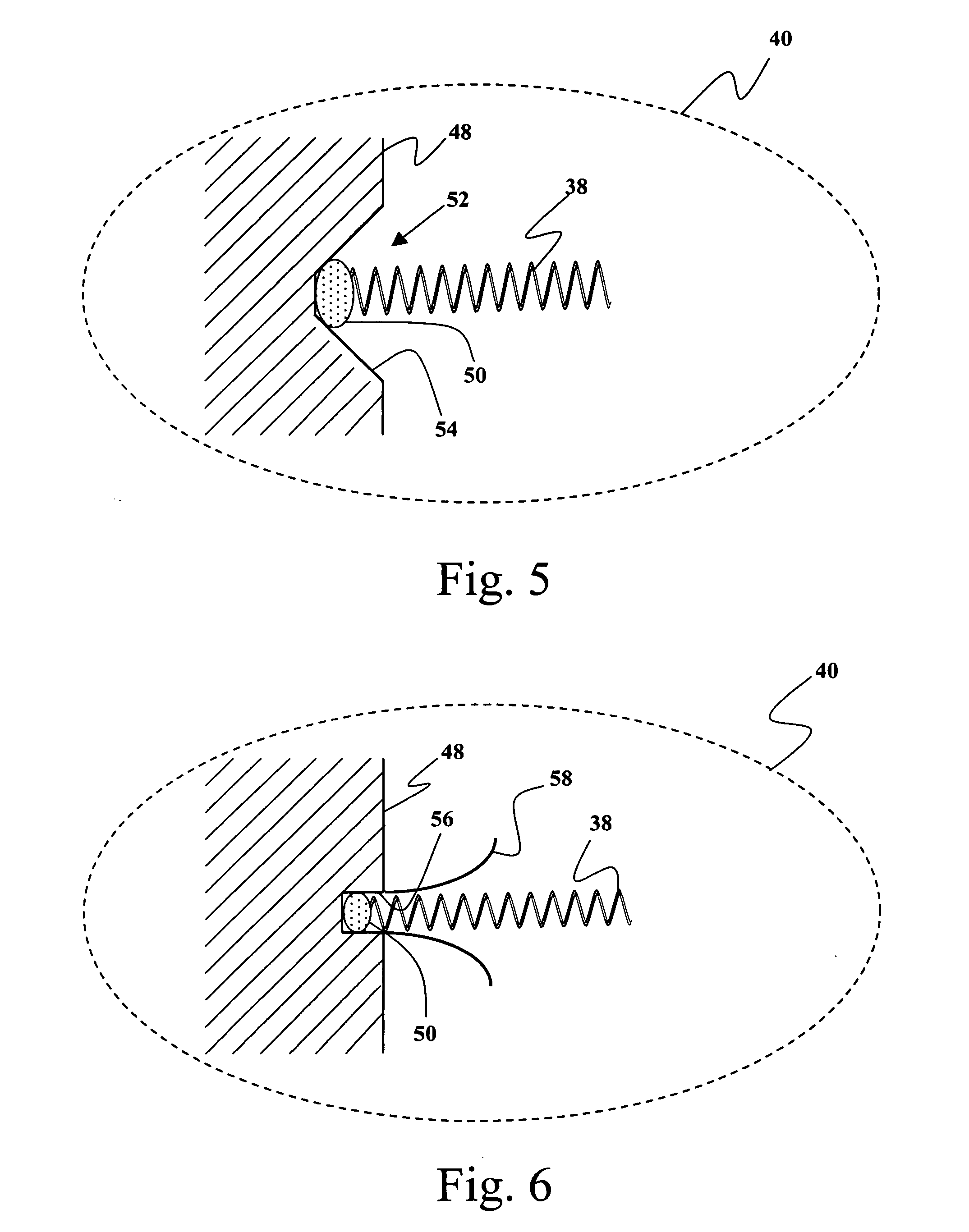Graduated stiffness for electrical connections in tires
a technology of electrical connections and tires, applied in the direction of fixed connections, coupling device connections, printed circuit assembling, etc., can solve the problems of b>20/b> being likely to suffer a fatigue failure (or break), affecting and affecting the service life of the circuit. , to achieve the effect of enhancing the stress resistance of the circui
- Summary
- Abstract
- Description
- Claims
- Application Information
AI Technical Summary
Benefits of technology
Problems solved by technology
Method used
Image
Examples
Embodiment Construction
[0019] Reference will now be made in detail to embodiments of the invention, one or more examples of which are illustrated in the drawings. Each example is provided by way of explanation of the invention, and not meant as a limitation of the invention. For example, features illustrated or described as part of one embodiment can be used with another embodiment to yield still a third embodiment. It is intended that the present invention include these and other modifications and variations.
[0020]FIGS. 3 and 4 provide side cross-section and partial plan illustrations respectively of an exemplary embodiment of the present invention. The particular illustrations represent a tire patch as might be used to house tire electronics for mounting in association with a tire. As shown, an exemplary tire electronics circuit element 36 is mounted on printed circuit board 48 and the combination is encased in an elastomeric tire patch 40. In this embodiment, electrical conductors 38 are connected to ...
PUM
 Login to View More
Login to View More Abstract
Description
Claims
Application Information
 Login to View More
Login to View More - R&D
- Intellectual Property
- Life Sciences
- Materials
- Tech Scout
- Unparalleled Data Quality
- Higher Quality Content
- 60% Fewer Hallucinations
Browse by: Latest US Patents, China's latest patents, Technical Efficacy Thesaurus, Application Domain, Technology Topic, Popular Technical Reports.
© 2025 PatSnap. All rights reserved.Legal|Privacy policy|Modern Slavery Act Transparency Statement|Sitemap|About US| Contact US: help@patsnap.com



